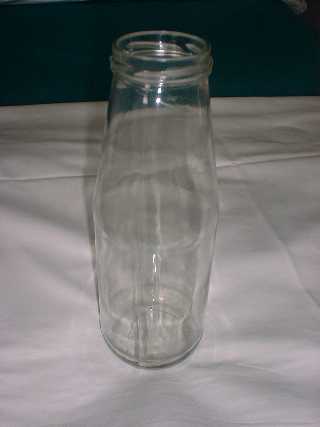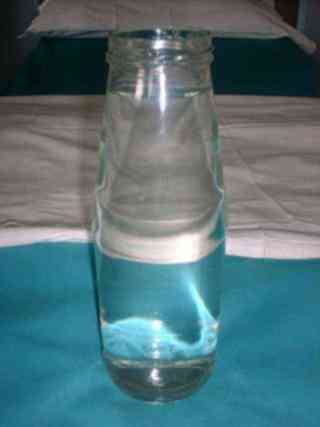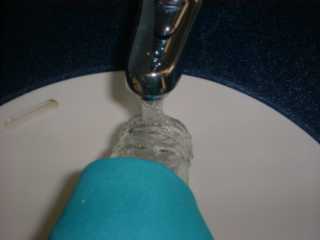Milk ejection difficulty
In the case of a general difficulty in ejecting milk (phase of the milk-cycle, mammary engorgement or blocked duct) the things that can be done to help solve the problem are these
1. precede breast-feeding by sponging or showering with warm water.
(Steps 2 and 3 can be reversed depending on the extent of the problem; it may sometimes be necessary to partially drain the breast before attachment).
2 or 3 Attach the infant to the breast by gently massaging the nipple while sucking.
If after attaching the infant, the breast still remains turgid, it can be drained a little with manual squeezing:
2 or 3 perform manual breast squeezing.
Place one hand under the breast supporting it, the other on top pressing with the palm and fingers towards the nipple.
If necessary, rotate hands in parallel, always performing the same movement to drain all segments laterally.
Repeat these movements several times
To drain the area near the areola:
Place index finger and thumb on either side of the areola and press toward the chest wall.
Press from behind the nipple and areola between index finger and thumb.
Press to the sides to drain all segments.
If the breast still remains tense and engorged, after warm water compresses, sucking, and manual squeezing...
4 use a manual syringe breast pump that does not drain the breast completely but only reduces the tension (you can also store the drained milk),
or if you do not have a breast pump or if the breasts are very sore, try the
bottle method:
get a bottle with a wide neck having a capacity of 700 ml. or one liter

boil some water and fill almost the whole bottle
(except for the neck)

wrap the bottle with a cloth and empty it, then cool the neck of the bottle with cold water in order not to scald the breasts

Attention
(touch the neck of the bottle with your finger to assess the temperature before use)
- place the neck of the bottle on the areola, exerting the necessary pressure to prevent the passage of air,
- after a few minutes a negative pressure will be created,
- the nipple and the areola protrude inside the bottle,
- the milk comes out.
Exclusive breastfeeding and on demand of the newborn, regulate milk production in relation to the sucking of the newborn, therefore they are the primary prevention towards engorgement.
Additional advice:
assess the correct attachment to the breast
suspend the use of pacifiers
suspend the newborn's intake of other liquids (if not expressly indicated by the pediatrician)
From: R. Cosentino, S. Conti Nibali Come usare il tiralatte Quaderni acp 2001; 8 (2)
How to use a breast pump
It is important for a breastfeeding mother to know how to express and store milk in order to maintain milk production and avoid supplementation with formula milk.
When is it useful to express and store milk?
- when a breastfeeding mother finds herself unable to breastfeed her baby (forced separation from the baby after birth for medical reasons)
- when the baby does not yet suck enough (e.g. low weight)
- when the mother returns to work or has to be away from home
- to reduce tension and pain in the breast in case of breast engorgement.
How to squeeze breast milk with your hands
Some initial acts serve to activate the reflex of oxytocin, the hormone that acts before and during the feeding and that allows the release of milk:
- keep the breast warm, with compresses or a shower
- sit comfortably
- massage with your fingers and gently stretch the nipples
- lightly massage the breast with a rotating movement in the direction of the nipple, keeping your hand closed.
At this point, after thoroughly washing her hands, the mother should:
- sit comfortably and hold a plastic container near the breast
- place her thumb over the areola and her index and ring fingers underneath (forming a letter "C" with her fingers)
- press your thumb and index finger slightly inward toward the chest wall, 1-2 cm (1 to 2 inches)
- squeeze firmly between thumb and index finger the part of the breast that is below the areola
- squeeze and release several times, without causing pain (if the oxytocin reflex is active, the milk will flow from the beginning; at other times it is necessary to wait a few minutes before it flows out)
- Repeat the squeeze several times, rotating your hand each time to squeeze milk from the whole breast;
- squeeze the breast for at least 3-5 minutes, until the flow slows down and the milk begins to drip. Then do the same with the other breast. Repeat two or three times on each side. Properly expressing milk takes 20-30 minutes, especially in the early days. The mother can use both hands for each breast, or switch hands when she feels tired.
The breast pump
when and which one?
- When a mother has difficulty squeezing milk with her hands, or when she has to squeeze milk for a long period of time.
It is important to have an effective, fast and painless breast pump. It would be preferable to have a professional electric breast pump; in this case, you can rent the electric compressor at the pharmacy and buy only the personal double kit, which can also be used as a common manual breast pump. The rubber pump breast pump is not very efficient and is also easily contaminated. The syringe breast pump is more effective than the pump to relieve engorgement.
How to use the breast pump?
The steps to follow are as follows:
- wash your hands with soap and water
- Keep your breasts warm by applying compresses or taking a shower.
- Sit comfortably
- Start pumping with a minimum intensity and gradually increase. It takes time for the milk to flow sufficiently and the amount of milk may also vary. If the milk does not flow straight away, patience is needed and the mother must remain relaxed: increasing the pressure of the breast pump may cause pain. Frequent pumping that empties the breast completely increases milk production. In order to maintain adequate milk production, in the absence of suckling by the baby, it is necessary to pump six to eight times a day, in quantities of at least 700 cc of milk per day. The best time to express the milk is in the morning, as soon as the mother wakes up, or when the baby has not emptied the breast completely, or after 1-2 hours from sucking.
How to store milk
- fill the container (hard plastic or glass) three quarters full
- add milk drawn on the same day to the same container
- the milk can be stored at room temperature for 8-10 hours (in summer it is preferable not to exceed 4 hours), or in the refrigerator for 48 hours, or in the freezer for 3 months
- thawed milk can be kept in the refrigerator for 48 hours
- milk is defrosted or heated in hot water, in a bain-marie. It is not thawed in a microwave oven to avoid the decrease of some essential components of milk (such as lysozyme and immunoglobulins) and to avoid having the milk reach too high temperatures that could burn the infant.
Cleaning and sterilizing the breast pump
- Remove the valve from the breast cup, remove the membrane and rinse it carefully with the cup, even upside down.
- The first time it is used, and once a day thereafter, all parts that come into contact with the breast and milk must be removed, washed, rinsed and placed in a sufficiently large pot filled with cold water until all parts are well covered. The tubes, not coming in contact with the milk, should be boiled only when they show traces of milk.
- Bring water to boil for three minutes
- Drain the water, boiling pieces should be cooled and allowed to dry on a clean cloth. As an alternative to boiling, disassembled pieces can be washed in the dishwasher using the standard full program. After each use, parts that come in contact with breast milk should be washed in warm water containing a mild detergent, rinsed in cold water and allowed to air dry over a clean cloth. Tubing should be hung up to air dry.


